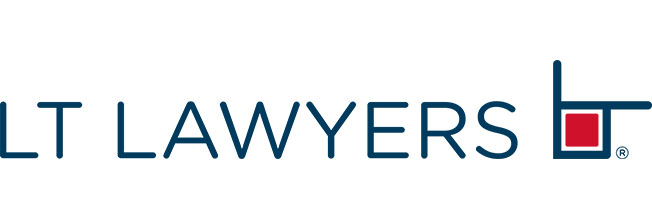Introduction
- A Chabra injunction, named after the case TSB Private Bank International SA v Chabra [1992] 1 WLR 231, is a type of Mareva injunction that could be granted against a third party against whom the plaintiff has no cause of action (non-cause of action defendant, “NCAD”) to ensure the effectiveness of a freezing injunction in respect of the assets of a defendant (cause of action defendant, “CAD”) and to assist enforcement of any judgment against the CAD.
- Per Kwan JA (as she then was) in XY, LLC v Jesse Zhu [2017] 5 HKC 479, the court may exercise the Chabra jurisdiction where it is satisfied that there is good reason to suppose that:
- The NCAD held, or had received, assets beneficially belonging to the CAD or assets in which the CAD had some sort of proprietary entitlement; or
- Some process ultimately enforceable by the courts was or may be available to the judgment creditor as a consequence of a judgment against the CAD, which the NCAD may be obliged to help satisfy the judgment.
- The applicant must also satisfy the court the following in applying for a Chabra injunction:
- The NCAD has assets within the jurisdiction (for a domestic Mareva injunction);
- The balance of convenience is in favour of granting the injunction; and
- There is a real risk of dissipation of assets on the NCAD’s part which would render the plaintiff’s judgment of no effect.
- It is recognized that the second limb of the principle set out in paragraph 2(2) above (“Second Limb”) is “potentially of extremely wide application”. To understand its scope of application, below is a case study from our recent relevant experience as an example.
Case study: Paloma Company Limited v Capxon Electronic Industrial Company Limited & Ors [2020] HKCFI 3050 (before Linda Chan J)
- In this case, we represented the respondents, namely Lancom Limited (“Lancom”) and Capxon International Electronic Company Limited (“Capxon Cayman”), the ultimate parent company of inter alia Lancom, in inter alia successfully discharging a Chabra injunction brought by Paloma Company Limited (“Paloma”) over assets of Lancom and Capxon Cayman (including the latter’s direct or indirect shareholding in 14 subsidiaries, most of which were overseas companies), eventually leading to favourable settlement between the parties.
Background leading to application for the Chabra injunction
- Paloma obtained an arbitral award in Japan against Capxon Electronic Industrial Company Limited (“Capxon Taiwan”), and was subsequently granted leave from the Court to enforce the same in Hong Kong against Capxon Taiwan in the same manner as a judgment (“Judgment”).
- It was Paloma’s case that it had not been able to meaningfully enforce the Judgment due to diversion of assets of Lancom, the only subsidiary directly wholly-owned by Capxon Taiwan, to other companies under the umbrella of Capxon Cayman, orchestrated by two natural persons (“Management Personnel”) being directors of Lancom and Capxon Cayman.
- Paloma intended to apply for receivers to be appointed over shares of Lancom for enforcement of the Judgment. To preserve the status quo pending Paloma’s receivership application, Paloma obtained on an ex parte basis and applied to the Court to continue the Chabra injunction over assets of Lancom and Capxon Cayman, which in Paloma’s view were amenable to enforcement of the Judgment against Capxon Taiwan.
Key grounds for and against Chabra injunction
| No. | Parties | Key submissions |
|---|---|---|
| 9. | Whether the case fell under the Second Limb | |
| (1) | Paloma | Once receivers were appointed over Lancom’s shares, the receivers could sue in the name of Lancom which had good arguable claims against Capxon Cayman, including Capxon Cayman’s knowing receipt of assets diverted by the Management Personnel as directors of Lancom and Capxon Cayman. |
| (2) | Capxon | The diversions of assets were normal dealings in the Capxon group’s normal course of business. |
| 10. | Whether there was a real risk of dissipation of assets on the part of Lancom and Capxon Cayman | |
| (1) | Paloma | There was a real risk of dissipation of assets on the part of Lancom and Capxon Cayman through the Management Personnel. The board of Capxon Cayman, a then listed company, was controlled by the Management Personnel: Capxon Cayman’s board comprised 8 directors, 5 of which were the Management Personnel and their relatives. |
| (2) | Capxon | There was no evidence that the Management Personnel controlled the board of Capxon Cayman or was able to procure Capxon Cayman to dissipate its assets. Any alleged asset-stripping did not result in dissipation of Capxon Cayman’s assets, as all the assets remained under the companies under the umbrella of Capxon Cayman. |
Court’s decision
- While the Court allowed receivers to be appointed over shares of Lancom, it refused to continue the Chabra injunction against Capxon Cayman and Lancom. Particularly, the Court was of the view that Capxon Cayman’s assets could not be used to satisfy the Judgment, i.e. the case did not fall under the Second Limb:
- Paloma’s application for appointment of receivers over shares of Lancom had nothing to do with Capxon Cayman or its assets.
- The fact that after the appointment of receivers, steps might be taken by the receivers to replace the directors of Lancom who, in turn, might cause Lancom to commence a claim against Capxon Cayman did not make Capxon Cayman a NCAD within the Second Limb. Otherwise, it would mean that the Chabra jurisdiction could be extended to any third party against whom a company owned by the debtor (not the debtor itself) might have a claim. The Chabra jurisdiction could not be extended this way.
- In any event, there was no basis to suggest that Capxon Cayman’s assets would become amenable to enforcement of the Judgment, whether by the process of winding up or appointment of receivers over Capxon Cayman.
- The Court was also unable to infer a real risk of dissipation of assets by Capxon Cayman and substantially agreed with Capxon’s submissions on this issue.
Conclusion
- Given the exceptional nature of the Chabra jurisdiction, namely its ability to freeze third party’s assets, it is natural for the courts to exercise its discretion cautiously to safeguard interests of innocent third parties who are not substantive defendants and have not acted to frustrate the administration of justice. As illustrated by the case study above, while the Chabra jurisdiction is “potentially of extremely wide application”, there remains a limit as to how far the jurisdiction could reach.
Disclaimer
The above contents by no means constitute any legal advice or recommendation by LT Lawyers. Please contact KM Liew at LT Lawyers if you have any inquiries about this article. You should seek professional advice before taking any action in relation to the matters dealt with in this article.
Copyright
If reprint of the above contents or any part thereof is desired, please specify at the forefront of any and all such reprint the source of such contents, namely “LT LAWYERS”.



